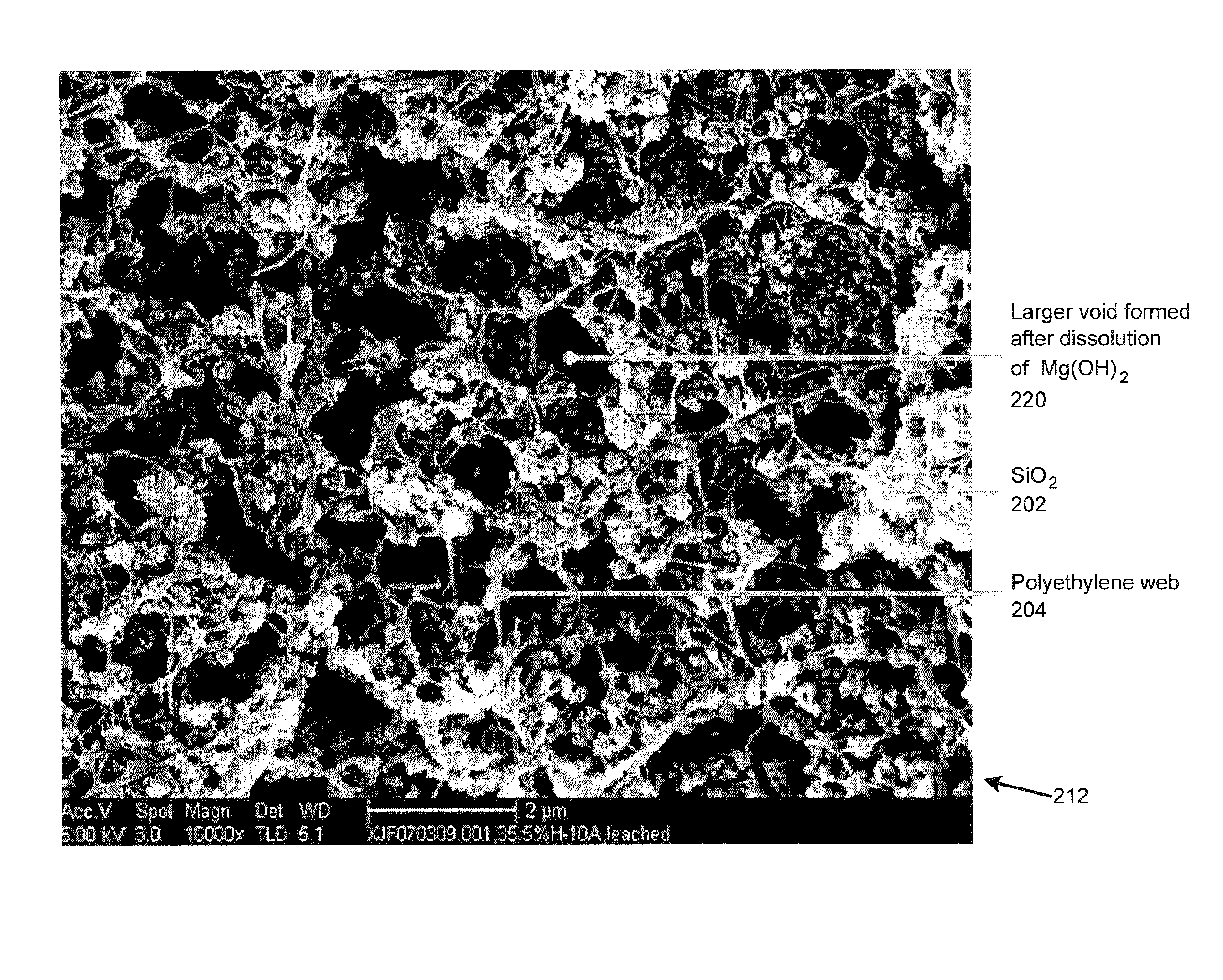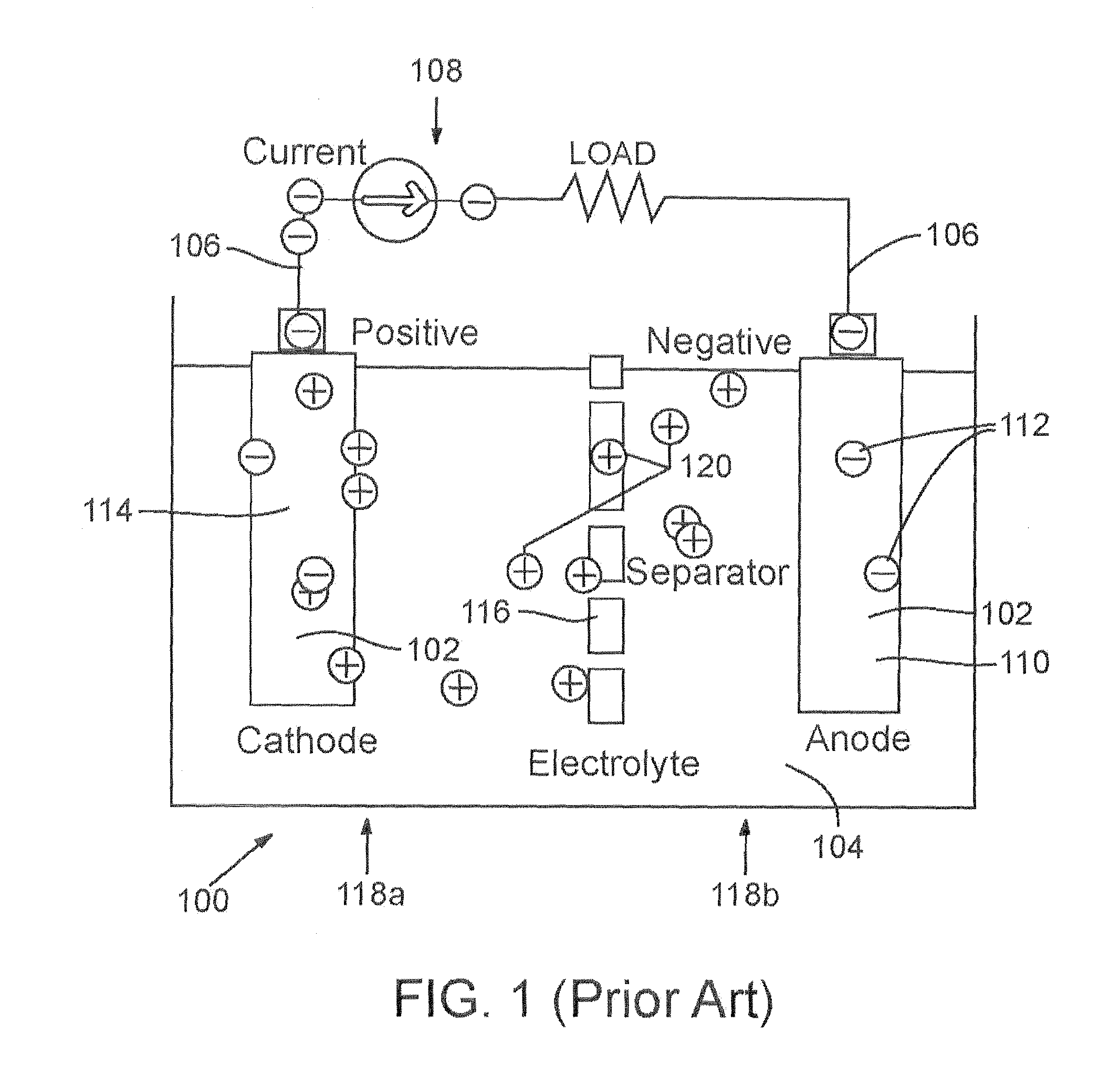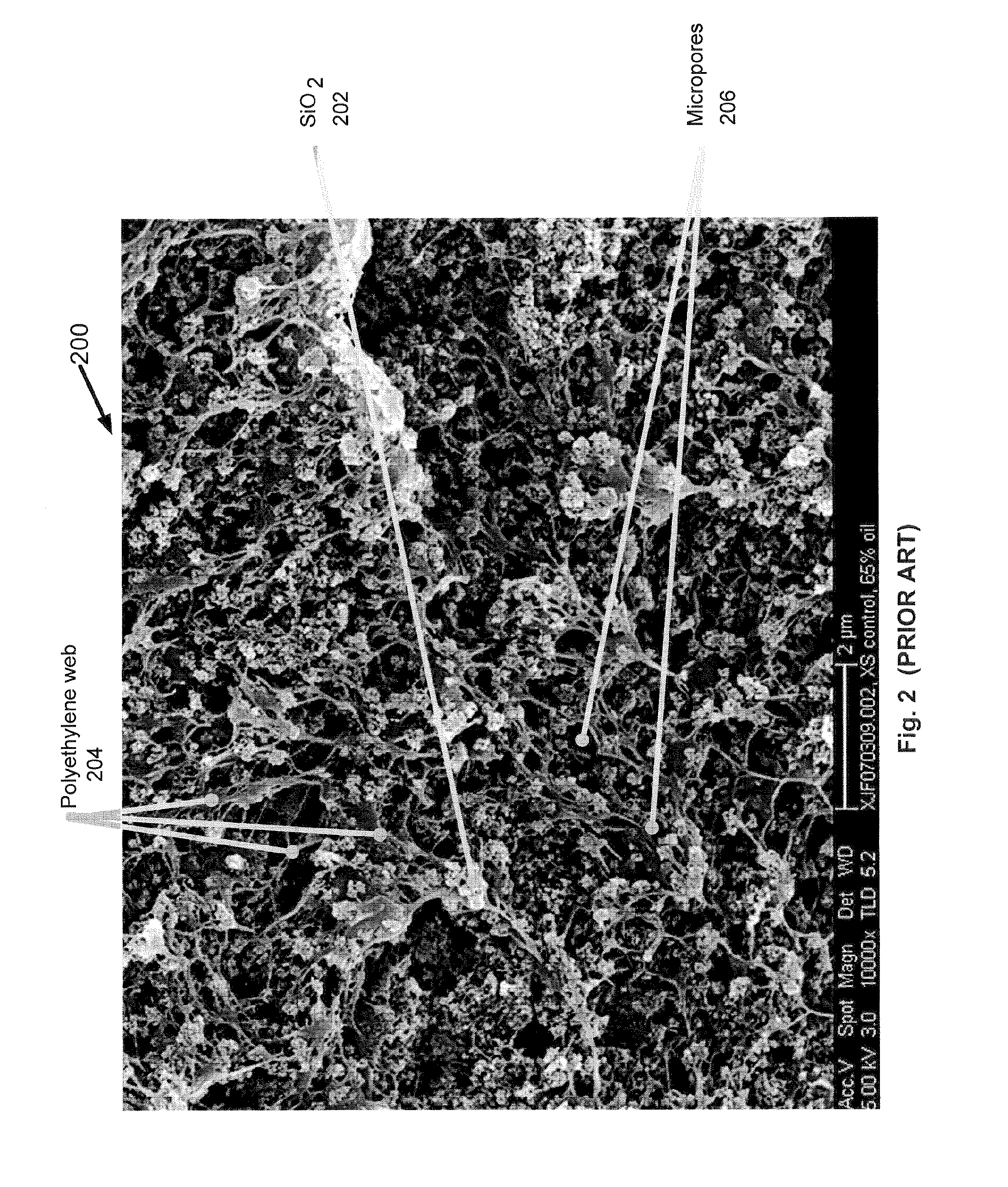In-situ pore generation in lead-acid battery separator
a lead-acid battery and in-situ pore technology, which is applied in the direction of cell components, electrical equipment, cell component details, etc., can solve the problems of inability to accurately control the inability to offer precise control of the recombination process or the rate of oxygen transport within the electrolyte, and the inability to achieve precise control of the recombination process or the rate of oxygen
- Summary
- Abstract
- Description
- Claims
- Application Information
AI Technical Summary
Benefits of technology
Problems solved by technology
Method used
Image
Examples
example
A RhinoHide™ separator is available from Entek International, Inc., of Lebanon, Oreg. Use of magnesium hydroxide as a sacrificial element in RhinoHide™ battery separators is successfully demonstrated by the following example: A preferred embodiment of a battery separator material including an electrolyte-soluble sacrificial pore former was produced on a 27 mm twin-screw extruder. The formula contained 43.3% dry weight of WB-37™ silica, manufactured by PPG Industries, Inc. of Pittsburgh, Pa., and 18.6% of UHMWPE (type GUR 4150, manufactured by Ticona, LLC of Florence, Ky.) such that the ratio SiO2 / PE=2.3, and 35.5% Mg(OH)2 (Magnifin®, particle size distribution grade H-10A with vinyl silane coating, manufactured by Albemarle of Baton Rouge, La.). (The formula also included 2.0% carbon black concentrate, 0.3% antioxidant, and 0.3% lubricant in the extrusion.) The extrudate contained 65% Hydrocal™ 800 (HC-800 oil, available from Calumet Lubricants Co. of Indianapolis, Ind.). A control ...
PUM
| Property | Measurement | Unit |
|---|---|---|
| porosity | aaaaa | aaaaa |
| temperature | aaaaa | aaaaa |
| melting points | aaaaa | aaaaa |
Abstract
Description
Claims
Application Information
 Login to View More
Login to View More - R&D
- Intellectual Property
- Life Sciences
- Materials
- Tech Scout
- Unparalleled Data Quality
- Higher Quality Content
- 60% Fewer Hallucinations
Browse by: Latest US Patents, China's latest patents, Technical Efficacy Thesaurus, Application Domain, Technology Topic, Popular Technical Reports.
© 2025 PatSnap. All rights reserved.Legal|Privacy policy|Modern Slavery Act Transparency Statement|Sitemap|About US| Contact US: help@patsnap.com



